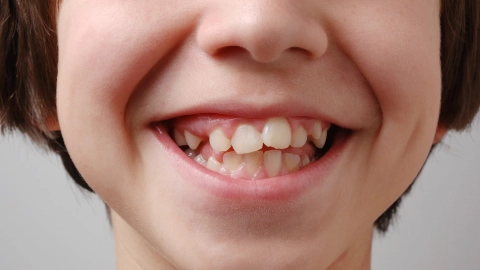Conditions Gingivitis and periodontitis
ICD codes: K05 What are ICD codes?
It is not unusual for the gums to become inflamed now and then. Such inflammation is normally harmless and quickly subsides again. If this spreads however, it can loosen the teeth over time. Then it is called periodontitis.
At a glance
- Gingivitis does not generally cause any major problems at first.
- But it can develop into periodontitis. The teeth can then come loose in the long run.
- Good oral hygiene is important for preventing inflammations.
- The earlier periodontitis is detected, the better it can be treated.
- Bacterial plaque and hard deposits are removed during treatment.
Note: The information in this article cannot and should not replace a medical consultation and must not be used for self-diagnosis or treatment.

What is gingivitis and what is periodontitis?
Gingivitis is an inflammation of the gums. It occurs in many people occasionally and does not usually cause any major problems. However, the inflammation can spread to parts of the periodontium and damage it. It is then described as periodontitis, or also as periodontal disease. Its consequences are more serious: it can cause the teeth to become loose over time.
To prevent gingivitis, it is important to carefully clean the teeth regularly. Even if periodontitis has already developed, good dental care is important so that the dental treatment can stop its progression or at least slow it down. That also applies to the post-treatment period.
What are the symptoms of gingivitis and periodontitis?
Gingivitis can remain unnoticed for a long time, because it does not usually cause any pain or other symptoms. However, the gums are reddened or swollen during gingivitis and can bleed – often when the teeth are being brushed, but sometimes also without an external cause.
Periodontitis likewise only causes symptoms when it is advanced. Typical symptoms are not only reddened and bleeding gums but also sensitive and increasingly visible tooth necks (“long teeth”), painful gums and bad breath.
The inflammation causes the gingiva to move away from the tooth neck. Gaps known as periodontal pockets emerge between them. If the periodontitis is already advanced, the teeth can shift, start to wiggle or hurt during chewing.
What are the causes of gingivitis and periodontitis?
If the gums become inflamed, the reason is usually bacterial plaque, commonly just called plaque. This thin and initially barely visible film consists mainly of bacteria and is deposited especially at the junction between tooth and gum. If touched with the tongue, it can feel furry.
The metabolic products of the bacteria can cause the gums to become inflamed and swell up. Properly brushing the teeth can remove plaque. This means that good oral hygiene reduces the risk of gingivitis and periodontitis.
Moreover, various factors favor both diseases, for example:
- smoking
- metabolic diseases like diabetes
- hormonal changes in pregnancy
Certain types of medication can cause excessive gum growth. This makes oral hygiene complicated and favors gingivitis. These medications include drugs that suppress the immune system – known as immunosuppressives – and medicines against vascular and heart disease. Some people are generally more susceptible to gingivitis than others.
How do gingivitis and periodontitis develop?
Gingivitis can recede again even without treatment. But if it persists, it can spread and become periodontitis.
In this case, periodontal pockets between the tooth and gums can get several millimeters deep, sometimes even more than a centimeter. The deeper they are, the further the bacterial plaque penetrates toward the root apex.
Hardened deposits under the gums are called calculus, while the term tartar describes hardened plaque above the gums.
Bacteria and calculus in the pockets can cause further inflammations. In the case of periodontitis, the inflammation attacks the periodontium, and at an advanced stage it also attacks the jawbone around the teeth. This can partially expose the tooth root and loosen the teeth over time. Chewing thus becomes more difficult or painful. Periodontitis can lead to preservation of the teeth no longer being possible.
The disease progresses in phases: short ones in which tissue is destroyed alternate with longer quiet phases in which the tissue can sometimes even recover somewhat. But periodontitis does not get better by itself without treatment.
How can gingivitis and periodontitis be prevented?
Plaque develops quickly, but can also be removed again by regularly brushing the teeth and using interdental brushes or dental floss. Children and adolescents can also learn how to clean their teeth properly in a dentist’s office. Statutory health insurance bears the costs of appropriate trainings up to the 18th birthday.
If plaque is not removed, the gums can become inflamed within just a few days. The plaque can moreover harden into tartar. A visit to a dental office is required to remove tartar. Tartar removal is often part of a dental check-up. Statutory health insurance assumes the cost for that once a year.
Anyone who is in need of care or has a disability can have tartar removed twice a year with medical insurance coverage and in addition be educated in how to care for teeth and dentures.
Hard and soft plaque is also removed during professional tooth cleaning. But this offer must normally at least partially be paid for by the patient.
You can read more detailed information, for instance about the advantages and drawbacks of professional tooth cleaning, at gesundheitsinformation.de.
How are gingivitis and periodontitis diagnosed?
Dental check-ups are also used to detect gingivitis. People with statutory health insurance can claim these twice a year.
Important: Anyone who has statutory health insurance can moreover have a special periodontitis examination carried out every 2 years, which is known as the Periodontal Screening Index (PSI). During this procedure, the entire dentition is checked tooth by tooth for periodontal pockets with the aid of a special instrument, a periodontal probe. Signs of gum bleeding, tartar, gingival recession and loosened teeth can thus be identified.
If periodontitis is suspected, other examinations are required – such as X-rays to determine whether the bone has already been affected.
What is treatment like?
The sooner periodontitis is detected, the better it can be treated. The goal in the process is to stop the progression of the disease as far as possible. Further damage can thus be prevented, as too can tooth loss by the patient.
Good oral hygiene is important for ensuring a successful treatment. Anyone who has gingivitis or periodontitis is thus also instructed about proper dental care in a dentist’s office. The statutory health insurance provider will cover the cost of this oral hygiene training within the scope of periodontitis treatment. Before the start of the actual periodontitis treatment, professional tooth cleaning is also frequently recommended although patients must pay for this themselves.
To treat gingivitis, the dentist removes tartar and – if required – projecting filling and crown margins. In this way, underlying bacterial plaque can be better eliminated.
If periodontitis is present, bacterial plaque beneath the gingival margin and hard deposits are removed. If this is not enough to stop the disease, a surgical intervention is sometimes recommended as well in order to clean the surface of the tooth root.
Deutsche Gesellschaft für Parodontologie (DG PARO), Deutsche Gesellschaft für Zahn-, Mund- und Kieferheilkunde (DGZMK). Häusliches mechanisches Biofilmmanagement in der Prävention und Therapie der Gingivitis (S3-Leitlinie). AWMF-Registernr.: 083-022. 2018.
Gemeinsamer Bundesausschuss (G-BA). Richtlinie des Gemeinsamen Bundesausschusses für eine ausreichende, zweckmäßige und wirtschaftliche vertragszahnärztliche Versorgung (Behandlungsrichtlinie). 2022.
Gemeinsamer Bundesausschuss (G-BA). Richtlinie des Gemeinsamen Bundesausschusses über Maßnahmen zur Verhütung von Zahnerkrankungen bei Pflegebedürftigen und Menschen mit Behinderungen (Richtlinie nach § 22a SGB V). 2022.
Gemeinsamer Bundesausschuss (G-BA). Richtlinie zur systematischen Behandlung von Parodontitis und anderer Parodontalerkrankungen (PAR-Richtlinie): Erstfassung. 2020.
Gemeinsamer Bundesausschuss (G-BA). Richtlinien des Bundesausschusses der Zahnärzte und Krankenkassen über Maßnahmen zur Verhütung von Zahnerkrankungen (Individualprophylaxe). 2003.
Institut für Qualität und Wirtschaftlichkeit im Gesundheitswesen (IQWiG). Systematische Behandlung von Parodontopathien: Abschlussbericht; Auftrag N15-01. 2018.
Pihlstrom BL, Michalowicz BS, Johnson NW. Periodontal diseases. Lancet 2005; 366(9499): 1809-1820.
Torpy JM, Burke AE, Glass RM. JAMA patient page. Periodontal disease. JAMA 2008; 299(5): 598.
Zitzmann NU, Ramseier CA, Weiger R et al. Parodontitis. Pathogenese, Risikofaktoren und Bedeutung für die Allgemeingesundheit. Schweiz Med Forum 2013; 13(9): 183-186.
In cooperation with the Institute for Quality and Efficiency in Health Care (Institut für Qualität und Wirtschaftlichkeit im Gesundheitswesen – IQWiG).
As at:





